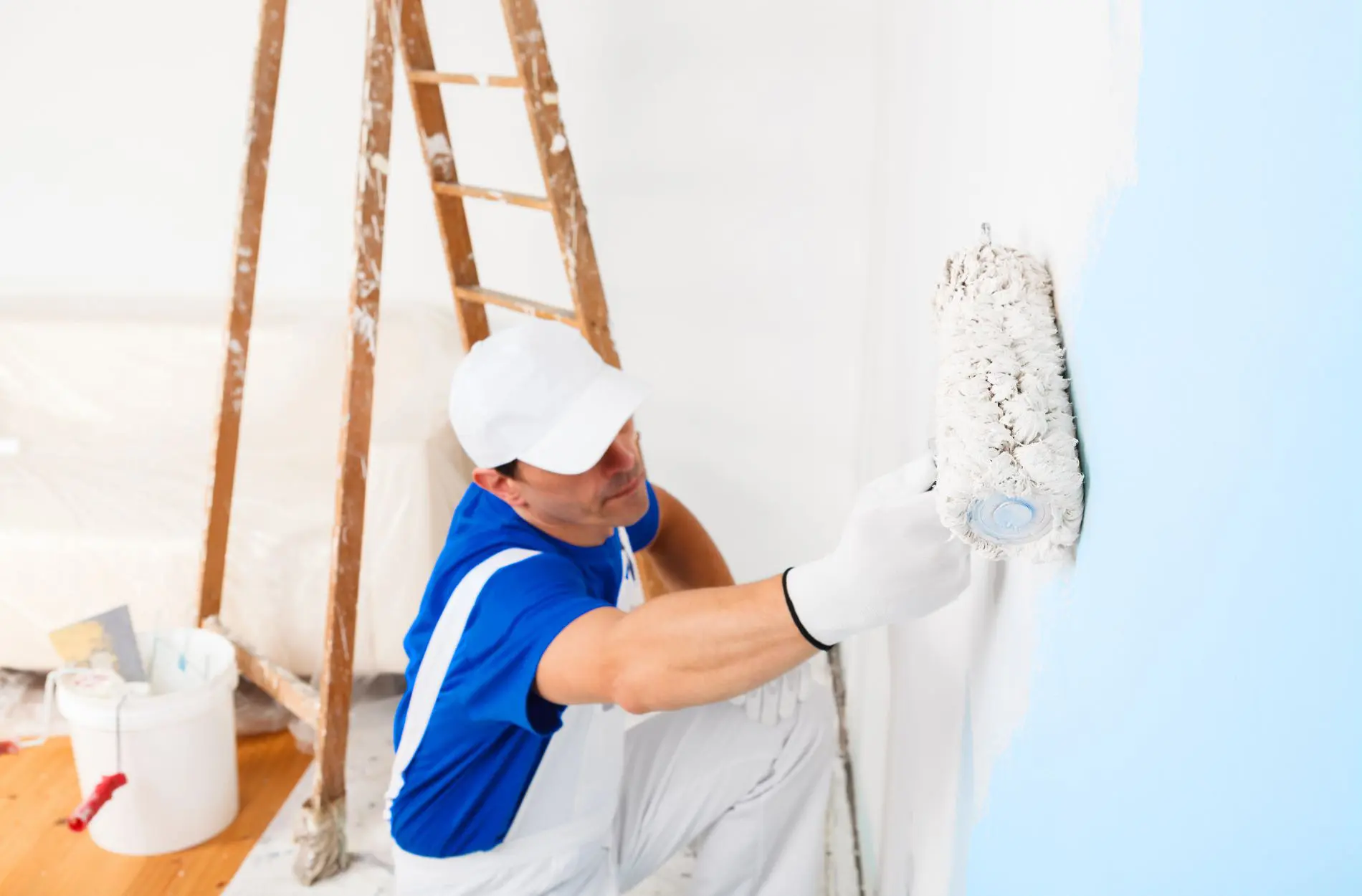Paint Curing Time Requirements in Washington DC

When it comes to painting projects, most people focus on choosing the right color and applying a neat coat, but few think about what happens after the brush is set down. Paint curing is one of those behind-the-scenes steps that plays a big role in how a room actually looks and performs over time. Especially for homes in Washington DC, where hot and humid summers are common, understanding how long paint really needs to cure can help you avoid problems like smudges, sticking, or uneven finishes.
Drying and curing might sound like the same thing, but they’re not. While paint may feel dry to the touch in just a few hours, that doesn’t mean it’s fully cured and ready to hold up to daily wear. If you’re planning any updates involving interior painting in Washington DC, knowing how curing works and how long it realistically takes is the key to getting lasting results, no matter the season.
Understanding Paint Curing And Its Importance
Curing is the chemical process that paint goes through after application to become fully hardened, durable, and bonded to the surface. It’s not something that can be rushed without consequences. Even if a wall looks and feels dry, it may still be vulnerable to scuffs, dents, or peeling if the curing isn’t finished. That’s why this stage is just as important as any other part of the painting process.
A common mix-up homeowners make is confusing drying time with curing time. Drying happens on the surface and usually occurs within a few hours, depending on the type of paint. Curing, on the other hand, can take days or even weeks. During that period, the solvents and moisture need the right conditions to evaporate, allowing the paint to harden all the way through.
Why does this matter for your home in Washington DC? Because conditions like high humidity or poor airflow can slow down this process. Rooms might stay tacky longer, which means furniture and decor should be kept off walls, and you might need to be patient before cleaning or wiping freshly painted areas.
Here’s why curing time really matters for a quality finish:
- It protects the painted surface from smudging, scratches, and general wear
- Ensures stronger paint adhesion, reducing the need for touch-ups or repaints
- Prevents trapped moisture which can lead to cracking or bubbling later
Skipping over this part of the process might not seem like a big deal if the room looks good right away, but long-term durability can suffer. For anyone considering a paint refresh, giving the curing process the attention it deserves will lead to smoother walls, fewer problems, and a finish that holds up well under daily use.
Factors Affecting Paint Curing Time
Paint doesn’t cure the same way everywhere, and Washington DC brings its own weather challenges into the mix. From high humidity in August to fluctuating temperatures during seasonal shifts, climate can have a real impact on the pace at which paint settles and hardens.
Here are some of the biggest factors that influence how fast or slow interior paint cures:
Type of Paint Used
- Water-based latex dries and cures faster than oil-based paints, but it’s still not instant. Water-based paints are common for interior jobs due to their low odor and faster drying qualities, but they still need proper airflow and time.
- Oil-based paints tend to take longer to cure. They offer a harder finish, which is great for trim or high-traffic areas, but you’ll have to wait longer before they reach full hardness.
Humidity and Temperature
- Washington DC’s late summer climate can be hot and muggy. Paint applied in high humidity can have curing times extended by several days. Excess moisture slows down evaporation, leading to a softer surface that’s more prone to damage.
- Ideally, you want indoor conditions between 65 and 80 degrees Fahrenheit with good airflow. A room with no ventilation and high humidity can make even fast-drying paint take much longer to fully cure.
Surface Material and Prep Work
- Whether you’re painting drywall, plaster, or wood, the surface needs to be clean and properly prepped. Dirty or glossy surfaces can prevent the paint from bonding correctly, which can delay curing or create peeling later.
- Applying too many coats too quickly without letting each one dry properly can also trap moisture between layers, slowing curing time dramatically.
Let’s say someone repaints their bedroom during a hot, rainy week without using air conditioning or fans. Even with a quick-dry latex paint, the finish might stay sticky for much longer than expected, and touching the walls could leave fingerprints days later. Having the right conditions from the start can make or break the entire paint job.
Average Curing Times For Different Paints
Understanding how long paint takes to cure can help you keep your space protected and looking its best. While all paint needs some time to fully cure, different types behave differently, and that impacts how soon you can return to normal use.
Here’s a general breakdown of what to expect:
- Water-based latex paints usually take about two weeks to cure, depending on the thickness of application and conditions in the room
- Oil-based paints can take up to a month to fully cure, especially when applied in thicker layers or in a humid room
- Specialty paints, like those with extra additives or finishes, might vary more and often need closer monitoring
For interior painting in Washington DC homes during late August, these timelines could stretch a little due to the lingering summer heat and higher humidity levels. Even air-conditioned homes may struggle to maintain ideal airflow, especially if windows are shut tight and ceiling fans aren’t running. This is where patience pays off. Letting the paint finish its curing process before hanging up wall art, opening windows often, or scrubbing surfaces will help keep your finish smooth and clean longer.
Signs that your paint is fully cured include:
- The paint feels dry and firm when gently pressed, without any tackiness
- No marks or impressions are left behind by light contact
- Surfaces can be cleaned without smudging or color transfer
If you’re ever unsure, it’s better to wait a few extra days rather than risk damaging fresh paint. The benefit of full curing is peace of mind that your walls or trim will hold up well under everyday use.
Tips For Ensuring Proper Curing Conditions
Giving your paint job a good environment to cure in can make a big difference. You don’t have to change your whole routine, but a few small steps can really help the process along. Whether you’re painting a bedroom or living room, keeping these do’s and don’ts in mind will go a long way.
Here are a few helpful tips:
1. Keep the room climate-controlled
- Use AC or fans to keep air moving, especially during humid days. Good air circulation speeds up evaporation.
2. Avoid overloading the surface
- Don’t apply several coats back-to-back without allowing drying time in between. This traps moisture.
3. Skip the heavy cleaning
- Hold off on washing or scrubbing any freshly painted surfaces for at least a few weeks.
4. Limit contact with painted areas
- Wait to hang artwork or rearrange furniture that touches the walls until you’re sure the paint has cured.
5. If needed, shorten the curing period carefully
- You can gently speed up curing by increasing air circulation or using a dehumidifier, but it should still be done gradually.
For example, a homeowner in Washington DC who finishes painting their foyer in mid-to-late August might open all their windows expecting the paint to dry faster. But if it’s really humid outside, that can slow the curing instead. A better approach would be to run the AC with fans to keep the air dry and moving, even during evening hours. That extra step can prevent the lingering softness and help the walls harden properly.
What To Remember Before You Put That Room Back Together
Letting paint cure isn’t just about following directions. It’s about protecting your space and the investment you’ve made. Spotting the difference between a dry surface and a cured one could be the key factor in how the finish holds up over time. If you’re living in Washington DC and planning an interior painting project, it helps to set the right expectations and timelines so you’re not rushing back into daily life too quickly.
While it may be tempting to resume normal room use right after paint feels dry, a little extra wait delivers a much stronger outcome. From knowing which paints cure faster to recognizing the impact of late-summer weather, being aware of how curing works helps you make better decisions throughout the project.
Understanding the curing timeline means fewer surprises, less risk of damage, and a finish that really lasts. That’s what gives interior spaces that clean, polished look long after the work is done. For homeowners in Washington DC, timing around climate and season makes this step worth the consideration. With the right care and a little patience, a fresh coat of paint can stay looking sharp for years.
For a seamless experience and professional advice on ensuring your paintwork withstands everyday wear and tear, consider the benefits of interior painting in Washington DC. Hömm Certified Painting Systems provides expert services tailored to the unique climate challenges the region offers, helping you achieve a flawless, long-lasting finish.










